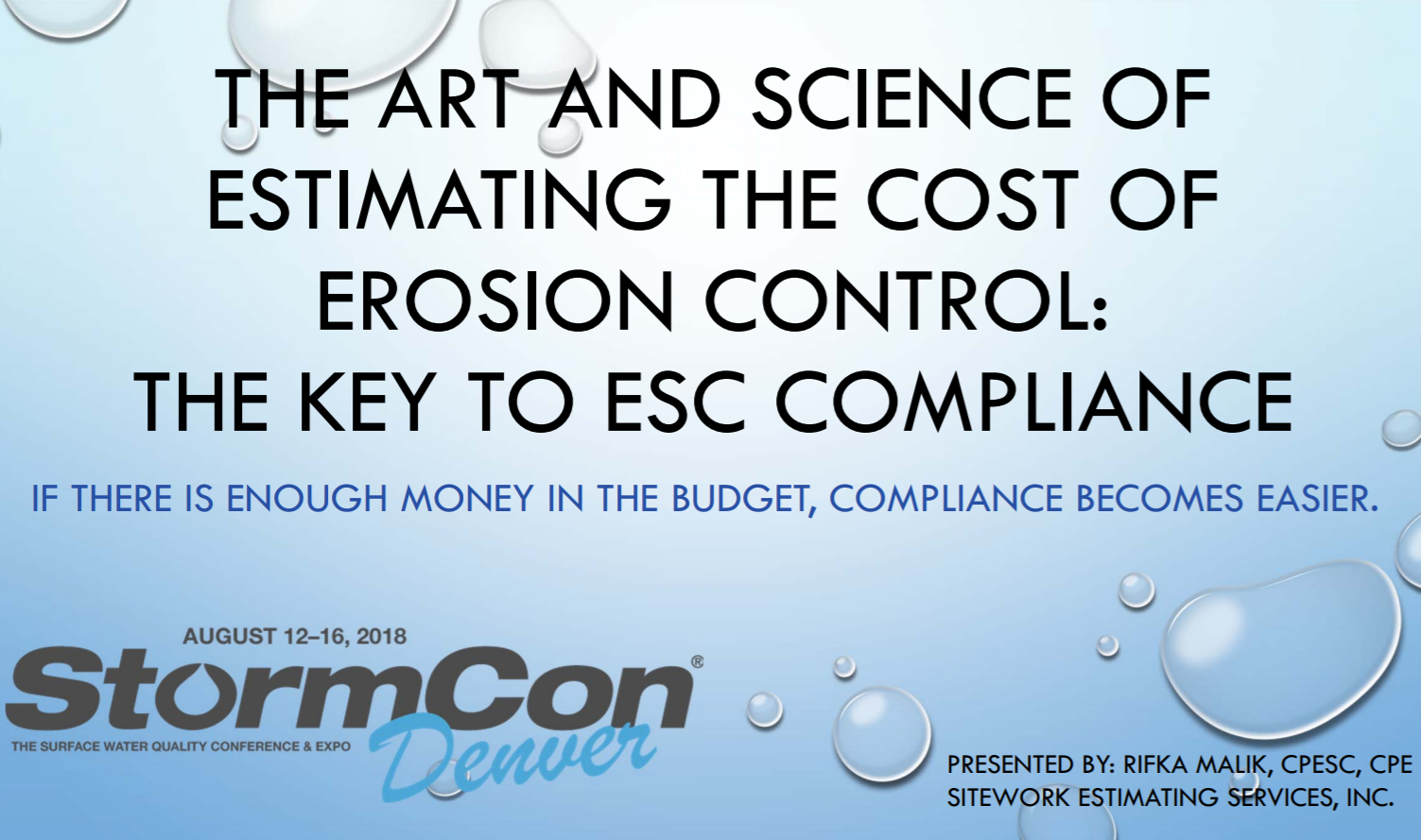[su_document url=”https://sitework-estimating.com/wp-content/uploads/2018/05/DCD-Jan-2018-Components-of-Estimating.pdf”]
We Came In Under Budget – Said No One Ever
The Critical Components of a Construction Cost Estimate
es·ti·ma·tor
ˈestəˌmādər/
Noun
a person who estimates the price, value, number, quantity, or extent of something.
What is a Construction Estimator?
It seems like a simple enough question. A construction estimator predicts the cost to build a construction project, right? True, but that is also an oversimplification. If you gather fifty estimators in a room, although they will all agree with the concept that “an estimator predicts cost” you are guaranteed to hear just as many versions of how he or she accomplishes that.
It is paramount that all critical components be accounted for in the meticulous process of forming a viable estimate. Some of these elements are not delineated within the documents, but rather depend on the knowledge, experience, and creativity of the construction estimator.
Scope Of Work
It starts with the extraction of a proper scope of work. Your bid documents may list “utilities” or even more specifically, “sewer pipeline,” but that is still vague. A proper scope of work that covers this line item appropriately will include one or more of the following considerations:
Pavement cutting and removal / Restoration
Excavation of soils and rock
Bedding
Structural Backfill
Pipe
Manholes
Cleanouts
Testing
Shoring
Traffic Control
Export of earth displacement
Did an estimator ever get an extensive list like this in their bid documents?
Is it truly all there in the drawings? Accounting for a complete scope of work entails a comprehensive analysis of all components necessary to complete a given task.
Quantity Survey
The estimator must account for many factors when performing a quantity survey, including but not limited to waste, proper conversions, height and depth factors, accessibility, and compaction adjustments. It is not just a simple measuring procedure. Quite often I discuss conversion rates with colleagues, and I’m told that a proper CY to TN conversion for a road sub-base is 1.5. That is only true if you are not planning to compact your sub-base, an important detail that will significantly change the cost estimate. When you are tasked with performing “just” a quantity take-off, are you truly “just” counting items?
Cost
And for the landmine: How do you allocate COST to these quantities? Go back to that hypothetical room of estimators, and ask that question at your own risk. This part is where the fireworks start.
Is it a good practice to use data from cost data books? In this author’s opinion, that is the definition of throwing enough stuff at the wall until something sticks.
I remember a meeting with an Italian client when the discussion turned to tomato sauce. More accurately, he asked me if I can make a good tomato sauce. I said,
“Sure, but what do you mean by “make” a good tomato sauce? Doesn’t that stuff come in bottles?”
Judging by his expression, I wasn’t sure if he was very angry or very amused. But I learned something important that day. Estimating is like tomato sauce. You can take it out of a bottle – a data book, or you can make your own.
When an estimator “puts a number” on a unit, identifying it as cost, there must be a logic behind it that the estimator understands fully, one involving a comprehensive methodology, formulated specifically to the entity that will rely on it.
Labor rates are but one factor to consider. Equipment availability and cost, crew set up, and productivity factors are unique to each company. When formulating a cost estimate as data behind a contractor bid, these factors cannot be overlooked.
Material costs need some thought behind it too. The cost is not merely the quoted price per unit from the material vendor. An estimator must include waste, taxes, transportation costs, offloading and handling.
Subcontractors are part of the business of construction. It is a very rare construction project that does not have a chain of contractors and subcontractors, at least in some capacity. Estimating is many things, but the one thing that it most certainly is not is simply a compilation of subcontractor quotes. Even when a subcontractor is utilized, and its pricing becomes a vital part of the cost estimate, there is nearly always a component of cooperation that will involve an actual cost to the contractor. For example, when a site contractor subcontracts the installation of concrete curbs, who will dig for the curbs? Who will backfill the curbs? Who will dispose of the earth spoils that the curbs generate? All of these questions must be asked, answered, and accounted for in the estimate.
Phasing
Some construction projects require phasing of all or parts of the project. This factor may affect the costs of the construction due to various factors such as additional mobilization costs, equipment downtime, and extended set-up time and costs. The estimator takes these considerations into account when building a proper estimate of costs.
Time and Escalation of Costs
Timing and seasons play a significant role in the construction process in some parts of the world. Productivity rates will vary due to weather, and some operations become impossible or impractical to perform in certain seasons. Breaking into frozen soils in December in the Northeastern United States will not cost the same as digging down into the same area in July. An estimator should assess when all components of the work will take place and account for its effect on the project.
Timing is also essential in the assessment of material and labor escalation. The duration of a project, whether it is due to the extent of the project, or due to lag as a result of other conditions, such as weather, a projection has to be made as to the escalation of material and labor costs.
Some clients do not wish to review all of the data as mentioned earlier; They certainly don’t want it clogging up their clean worksheet. That does not absolve the estimator from gathering, analyzing, and utilizing that data in the formation of a cost estimate. It merely compels the estimator to employ better organization.
As I have learned from my client, Sal, that stuff in the bottle is no tomato sauce at all. It looks the same and can be confused as the same, but it is a whole different ballgame. If you want a good product, invest the time and effort, use quality ingredients, create a mess, follow a sound methodology, and clean up after yourself. And as is the norm for us estimators, do it fast. The result will be a quality product that will serve your client well.
About the author: Rifka Malik, CPESC, CPE, is the President of Sitework Estimating Services, Inc. and a board member of CERT, the Consulting Estimators Round Table.



